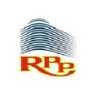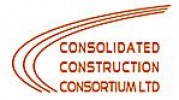Filter interviews by
KMC Constructions QS Engineer Interview Questions and Answers
KMC Constructions QS Engineer Interview Experiences
1 interview found
I applied via Approached by Company and was interviewed in Apr 2024. There were 2 interview rounds.
Which type of work and how to manage work on data Lake through NHAI One Application
Check and mention work on site dally from NHAI Data Lake
Interview Preparation Tips
Top trending discussions






Interview questions from similar companies

I applied via Walk-in
About your job, location, CTC
(2 Questions)
- Q1. Gdjjdnksnd shgxkdjx vhkdkxnx
- Q2. Years of experience & expectex salary facility provided by company
Interview Preparation Tips

I applied via Walk-in and was interviewed in Apr 2023. There were 2 interview rounds.

(3 Questions)
- Q1. What is the construction procedure
- Ans.
Construction procedure involves planning, designing, obtaining permits, site preparation, foundation construction, framing, finishing, and inspections.
Planning and designing the project
Obtaining necessary permits
Site preparation and excavation
Foundation construction
Framing and structural work
Installation of utilities and systems
Finishing touches such as painting and flooring
Final inspections and approvals
- Q2. What's is the beam lapping position
- Ans.
Beam lapping position refers to the location where two beams overlap or intersect in a structural element.
Beam lapping position is important for ensuring structural integrity and load-bearing capacity.
Common beam lapping positions include end-to-end, side-by-side, and staggered lapping.
Proper beam lapping position is determined by engineering calculations and design specifications.
- Q3. What is the tile procedure
- Ans.
The tile procedure is a method used in computer graphics to fill a region with a repeating pattern or image.
The tile procedure involves dividing the region into smaller tiles and filling each tile with the desired pattern or image.
It is commonly used in graphic design software to create seamless textures or backgrounds.
The size and shape of the tiles can be adjusted to achieve different visual effects.
Examples of tile ...

I applied via Walk-in and was interviewed in Apr 2023. There were 2 interview rounds.
(1 Question)
- Q1. About the previous projects & work procedures.
(1 Question)
- Q1. Salary Discussion

I applied via Walk-in and was interviewed in Jul 2021. There were 3 interview rounds.
Interview Questionnaire
1 Question
- Q1. Basics of civil engineering
Interview Preparation Tips

I applied via Naukri.com and was interviewed in Jul 2024. There was 1 interview round.
(2 Questions)
- Q1. Experience details.
- Q2. Joining condition
Interview Preparation Tips


(1 Question)
- Q1. Per cubic metre concrete weight
- Ans.
The weight of concrete per cubic metre varies depending on the mix and density.
The weight of normal concrete is around 2400 kg/m³
Lightweight concrete can weigh as little as 1600 kg/m³
Heavyweight concrete can weigh up to 3800 kg/m³
The weight of concrete can also be affected by the aggregates used
Interview Preparation Tips

I applied via Walk-in and was interviewed in Jun 2020. There were 3 interview rounds.
Interview Questionnaire
1 Question
- Q1. Civil basic question
Interview Preparation Tips
2 nd Ms office
3 rd Excell

I applied via Approached by Company and was interviewed before Dec 2021. There was 1 interview round.
(2 Questions)
- Q1. Duties and responsibilities
- Q2. Tests and documentations
Interview Preparation Tips

I applied via Naukri.com and was interviewed in Mar 2023. There were 3 interview rounds.

(1 Question)
- Q1. Just previous company and experience and salary
(1 Question)
- Q1. Full details on previous job roles and responsibilities
KMC Constructions Interview FAQs
Tell us how to improve this page.
KMC Constructions Interviews By Designations
Interview Questions for Popular Designations
- Site Engineer Interview Questions
- Civil Site Engineer Interview Questions
- Civil Engineer Interview Questions
- Planning Engineer Interview Questions
- Junior Engineer Civil Interview Questions
- Senior Civil Engineer Interview Questions
- Senior Project Engineer Interview Questions
- Senior Electrical Engineer Interview Questions
- Show more
KMC Constructions QS Engineer Interview Process
based on 1 interview
Interview experience
Interview Questions from Similar Companies
|
Graduate Engineer Trainee (Get)
20
salaries
| ₹2 L/yr - ₹2.6 L/yr |
|
Junior Engineer
14
salaries
| ₹2.2 L/yr - ₹4 L/yr |
|
Site Engineer
11
salaries
| ₹1.5 L/yr - ₹4.5 L/yr |
|
Assistant Manager
10
salaries
| ₹4.4 L/yr - ₹5.5 L/yr |
|
Senior Engineer
7
salaries
| ₹4.1 L/yr - ₹7.2 L/yr |

Ramky Infrastructure

McNally Bharat Engineering

Consolidated Construction Consortium

SPML Infra
- Home >
- Interviews >
- KMC Constructions Interview Questions >
- KMC Constructions QS Engineer Interview Questions










